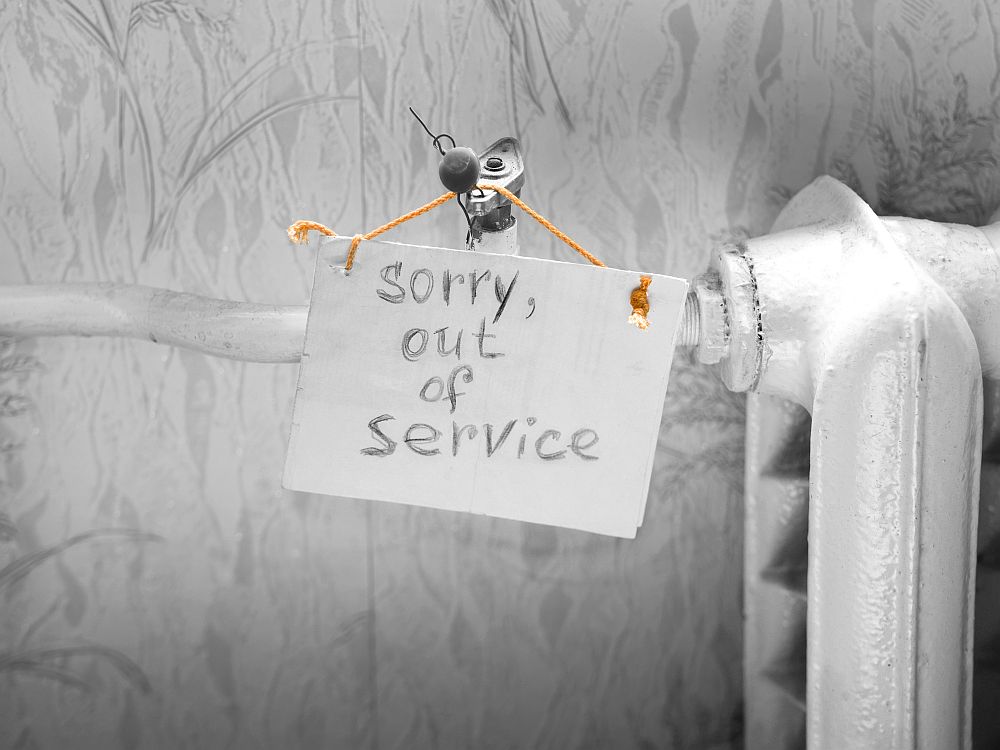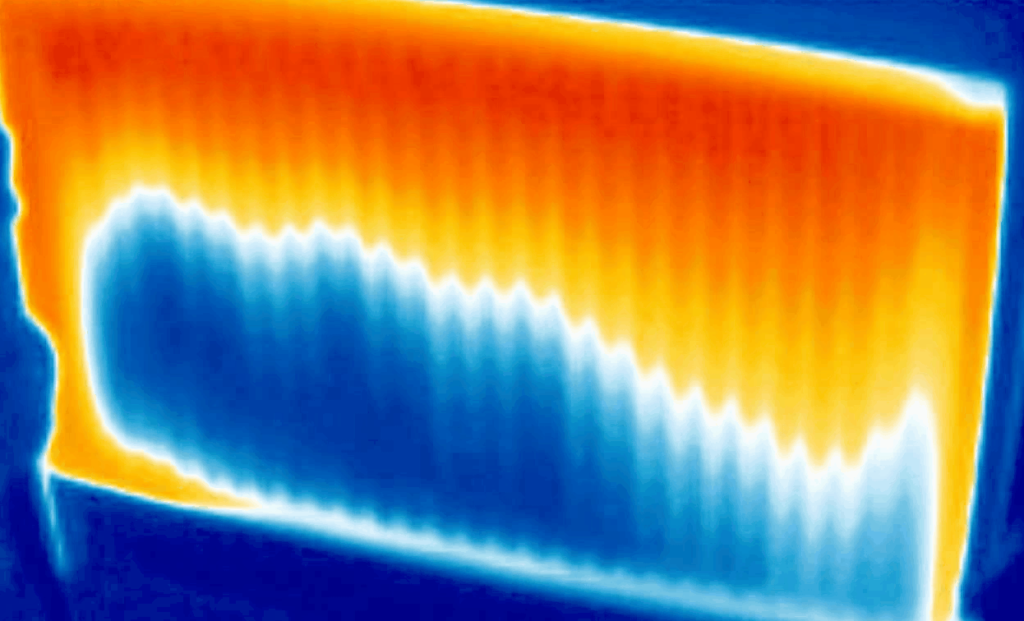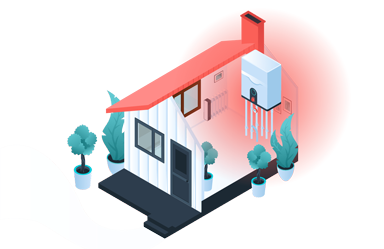Central Heating Sludge Build-up? Here’s How To Remove It
Roughly 20% of boilers will break in any given year. There is a well-known killer of central heating systems, and it’s not old age — it’s radiator sludge.

A lot of people think that their boiler breaking after 5-10 years is normal. And in a way, it is. However, understanding, removing, and preventing radiator sludge could mean that a boiler lasts as long as possible.
And that’s because sludge build-up contributes to a whole host of heating and boiler problems that could easily be avoided.
What is Radiator Sludge?
Sludge is essentially a mix of dirt particles and bits of rust (iron oxide) that break off from the pipework, radiators, and soldered joints over time. So, the older the system is, the more likely it is to have some heating sludge build up.
Dirt and rust combine to make a gooey liquid. As this mixture passes through the central heating system components, some of the particles settle and accumulate. As time goes by, sludge can clog the system to a point where the heat is patchy on radiators, radiators don’t work properly, or don’t heat up at all.
Radiator Sludge Can Damage Central Heating System Components
Alarmingly, sludge can physically block important components, such as the boiler’s heat exchanger, which may cost a lot to fix.

In some cases, we’ve seen sludge block radiator valves and microbore pipe work; these blockages restrict the flow of water. The problem is the heating pump doesn’t recognise the change (increase) in pressure. It will continue to pump, and the back pressure can sometimes blow the pump’s seal.
We’ve seen these blown seals leak to a point where they corrode internal parts in the boiler (such as the PCB) and the boiler must be replaced. Sludge build-up really is a big deal and it shouldn’t be ignored if you want to protect your heating system as long as possible.
The good new is that you can prevent these issues by troubleshooting for heating sludge build-up early on.
Common Symptoms of Sludge Build-up
Below are some tell-tale signs of sludge accumulation in the central heating system.
- Radiators have patchy areas of warmth, or cold spots.
- Radiators are cold at the bottom and middle.
- Some radiators in fail to heat at all.
- Radiators need regular bleeding and you don’t know why.
- You observe dirty water when bleeding radiators.
- Boiler keeps making strange noises.
- Radiators don’t get up to temperature, even though the radiator valve is turned up to the maximum setting.
- The circulator pump is struggling with back pressure and is overheating.
- The circulator pump is leaking due to the back pressure causing a blown seal.
- Pipework to radiators is hot, but the radiators are cold.
- Broken boiler parts are blocked with dirt.
- The flow on the boiler is boiling hot, but the return is pretty much cold.
- Valves keep breaking.
Testing Your Heating System for Sludge Build-up
There is a really quick and easy way to test for sludge build-up without ripping your heating system apart.
Using a radiator drain key and a small container, open the radiator bleed valve. Wait for water to drip into the container. If you get dirty water when bleeding radiators, it’s a sign of sludge blockages.
However, it doesn’t necessarily mean that sludge alone is causing the problem. If your radiators are hot at the bottom, but not the top, that’s a sign of air build up. Bleed all the radiators in the house to find out.
Once you’ve bled all the radiators, put the heating to full temperature. You’ll want to check all the radiators and see if they are cold at the bottom.
If there are cold spots on the bottom of your rads, check the pipes going into them. In the event they are, there’s a very good chance heating sludge build-up is wreaking havoc on your central heating system. The sludge has settled at the bottom of the radiators and isn’t allowing them to heat properly.
Do I Need to Remove Radiator Sludge Before Installing a New Boiler?
If you are planning to have a boiler replaced with a new one, removing the sludge from the system first is certainly a good idea.
Most people think heating sludge build-up will just affect the radiators’ ability to heat up. However, the reality is that the restrictive flow that heating sludge causes will put back pressure on the boiler. This can cause the diverter valve to seize and destroy parts like the heating pump and the heat exchanger quickly, even if these parts are brand new.
And it’s not just the pump and heat exchanger you should worry about. The sludge will deposit harmful particles, like rust and dirt, on pretty much every component in the boiler. This will considerably reduce its life expectancy.
Preventing Heating Sludge Build-up
Preventing heating sludge build up is quite simple.
The first step would be to fit a scale reducer, which will catch any particles that are in the water. This is particularly important in areas of hard water (around 50% of the UK). A scale reducer can be fitted for less than £100 and offers great protection to your system against heating sludge.
The second step, and probably a more important one, is to fit a magnetic sludge system filter. The heating system’s dirty water contents are constantly circulating around your the radiators, towel rails, and pipework. A magnetic system filter will catch most the particles in the sludge.
I’d suggest going with a quality brand your sludge magnet. Top brand filters include the Fernox TF1 filter and the Magnaclean Professional 2 (they are available in 22mm and 28mm depending on the size of your pipe work).
Check out this video that shows the difference a magnetic system filter can have on sludge build-up, and how quickly it can get rid of it. In a matter of minutes, it can remove the majority of sludge that is circulating throughout your radiators and pipework.
To aid the system filter, you should dose your system with an inhibitor. All heating merchants sell inhibitor. This chemical breaks stubborn particles down and puts them back into circulation, where they’ll eventually hit the scale reducer or the magnetic system filter (also known as a radiator sludge magnet).
A popular system inhibitor that will help to keep sludge at bay is Sentinel X100. Although, any inhibitor from a reputable plumbing merchant is going to be better than having none!
Removing Radiator Sludge
If you have put sludge prevention methods into place, you should now have a scale reducer and sludge magnetic system filter installed, as well as the system being dosed with inhibitor. This will keep any future build-up of sludge staying in the system. The inhibitor will also break down some of the existing stubborn sludge in the system.
So, let’s cover some methods to remove sludge and how much they cost. Some of the methods can even be done on a DIY basis.
How to Flush the Central Heating System Manually
If you’re willing to take the risk, manually flushing a central heating system can help remove some of the sludge. You will need to remove every single radiator manually, and flush them out to remove sludge build-up. This cleaning process shouldn’t cost you anything, but will probably take a day.
Alternatively, a heating engineer will be able to do this for £150-300.
While draining the central heating system, you will need containers and lots of towels. The radiator water is quite dirty, so make sure you cover the holes where the valves go. It might be an idea to get another person to help you.
Prepare an area outside (near a hose connected to mains water and a drain point) and lay down something to protect the radiators from scratches and dents (if the area is slabbed, etc). Then, you can follow the steps below:
Steps to Flushing a Central Heating System Manually
- As a safety precaution, leave the heating to cool down
- Open zone valves, then turn off the thermostatic radiator valve and lockshield radiator valve on each radiator
- Disconnect valves from each radiator
- Open the air bleed valve on the radiator using a bleed key
- Tip out any loose heating sludge
- Connect the hose to the radiator and turn on the hose
- Wait for water to turn clear
- Give the radiator a few “love taps” (this will loosen stubborn sludge) until water is clear again
- Refit the radiator and move onto the next one
Bear in mind, this isn’t going to clear the most stubborn of sludge (which is probably causing the problem). However, it will clean out most sludge build-up in your system, so it should run noticeably better than before.
If you want more information on how to drain a central heating system, or how to clean inside a radiator, read our detailed guide here.
Central Heating Power Flush
The next option to remove sludge is by power-flushing the radiators with a cleaning product. Power flushing costs vary depending on the area of the UK you live in, but mainly depending on how many radiators you have.
A power flush is essentially the same as a manual flush. However, the heating engineer will use a central heating cleaner and a powerflushing machine to flush the radiators at a much higher flow rate. Since power flushers send water under pressure, they can attack all that stubborn sludge in the radiator. Some of this dirt and rust would not be removed with a manual flush at a lower flow rate.
This, in combination with a quality cleaning chemical will get the job done.
If you’re using a local trade, expect to pay anywhere from £300-700. A power flush from a national company such as British Gas is likely to be £450-850.
There are some downsides of power flushing a central heating system. The extra pressure can put lots of pressure on old heating components and joints (copper elbows and radiator valve connections) and a lot of the time it leads to leaks.
Replace Offending Radiators
If you have just one or two radiators not working correctly, the cheaper option is to replace them. This will be a small fraction of a power flush cost. You can see our guide on radiator installation costs here.
If you’re in luck, the radiator with sludge in it is relatively small (for example, a 600mm x 600mm single panel radiator). This would be less than £100 to replace, depending on the location.
Bear in mind that newer radiators are around 50% more efficient than old radiators. So, this could improve the heat in your home, and save you money.
After replacing the offending radiators, a quick manual central heating flush will usually be enough to get your heating system working again.
Get Your Boiler Serviced Regularly
Finally, get a Gas Safe engineer to give you annual boiler service.
Not only are they likely to notice some common signs of heating sludge build-up, but they will also be able to clean out the magnetic system filter (which should have caught a years’ worth of sludge).
We’ve already written an article about boiler servicing costs here.
Final Words on Flushing Sludge From the Central Heating System
Apart from faulty boiler components, radiator sludge build-up is the #1 killer of heating systems. Hopefully, this article has explained a few ways to identify if your system has sludge, how to remove sludge and how to prevent it from returning.
If you have any questions regarding heating sludge or any other heating and boiler problems, please leave a comment and we’ll get back to you as soon as we can.

We have a 2 story home with 9 radiators. The downstairs radiators stopped working. The down pipe was hot and the return stone cold. We’ve had a heating engineer in who has drained the system and used a magnacleanse to try and flush the system. He’s also used a vibration device directly on the radiators also and put several series of chemicals in. He;s also put a magnaclean on the system above the boiler permanently.
The situation after almost a week is some downstairs radiators are working – slightly – the only one that works properly is a heated towel rail that is a lot newer than the other rads. We’ve left the central heating on all weekend (72 hrs plus) and tried turning off all the upstairs rads we could to increase flow downstairs. No improvement. All the time our costs are rising.
I don’t want to come across as telling the heating engineer his business, but I don’t want him to continue repeating a method that doesn’t seem to be removing the sludge from the system while his intial projections for the job double.
— Should he be using a pump togeather with the magnacleanse to increase pressure in the system. Is this safe?
– Maybe our expectations need setting effectively. Should we be more patient in waiting for the chemicals in the system to do their job and re-engage an engineer after a month if the situation has not improved?
Hey Dan,
A hot flush (no pressure) gets rid of most sludge. Some just doesn’t shift. Yes, you can do a powerflush, but the problem with that is it’s older systems that need them (i.e. more sludge), but it’s risky as it can blow seals, joints etc. Newer systems shouldn’t really need the pressure…
If there’s been inhibitor/descaler, a flush and then a scale reducer catching scale and magnetic filter catching sludge it’s either:
Completely blocked somewhere.
A totally different problem.
What boiler/system do you have? I assume it’s been bled and balanced?
Did the problem suddenly happen, always happened, or was it after another event (additional radiator fitted, new pump etc)?
Hiya – We’ve lived in the same 1950s property since 2002. The boiler was replaced in 2006 with a Worcester Bosch condensing boiler. TRVs went on most of the rads then as well. A power flush was performed at that point. The boiler was serviced last year. I assume its been bled and balanced either then, recently or both. I can always ask!
The problem with the downstairs rads has been progressive. One after the other they stopped working over the passage of a few months. We did have a new kitchen put in about 8 months ago, but that’s the last thing I can think of when we used a plumbing engineer.
As I say, some of the downstairs rads are sort of working. Not all. The ones that are might get a bit warm, following the flow in one end, across the top of the rad and down the other. I guess that’s consistent with where sludge gathers. My worry is that it is simply not improving any further.
The upstairs rads work just fine – hot, hot, hot! 🙂
Appreciate the responses.
Hi. An engineer fitted a filter to my boiler yesterday and put some chemicals in. How long can I expect it to take to start working?
What did they say? It should be quick, really quick.